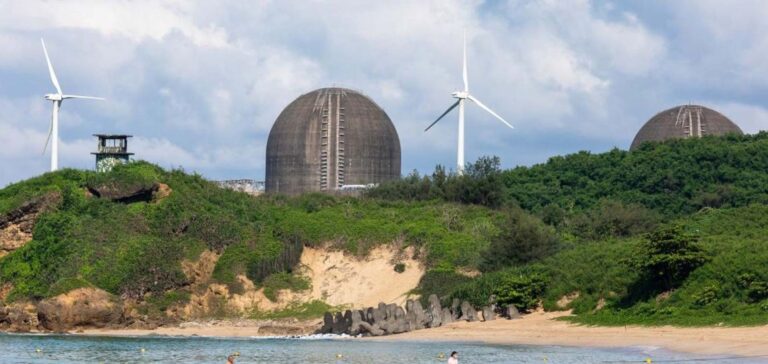The Maanshan 2 reactor, with a capacity of 938 megawatts electric, ceased operations on 17 May, bringing nearly four decades of nuclear power generation in Taiwan to an end. The unit, operated by Taiwan Power Company (Taipower), was shut down as its operating licence expired, in accordance with a government-led policy for the phased withdrawal from nuclear energy.
Shutdown carried out under regulatory framework
According to the Ministry of Economic Affairs, the reactor’s output was gradually reduced from 1 p.m. local time before being fully disconnected from the grid at around 10 p.m. The unit was declared in a safe shutdown state a few hours later. Construction of Maanshan 2 began in February 1979, and it entered commercial operation in the spring of 1985.
The decommissioning followed national regulatory requirements, which mandate that operators submit a dismantling request at least three years before halting energy production. This procedure was initiated in July 2021 by Taipower for both units at the plant.
Gradual phase-out of Taiwan’s nuclear fleet
Unit 1 of Maanshan, with a capacity of 936 megawatts electric, was shut down on 27 July 2023 when its licence expired. This followed the earlier shutdowns of Chinshan and Kuosheng nuclear reactors between 2018 and 2023, in line with scheduled decommissioning timelines under existing laws.
The Lungmen nuclear project, launched in 1999, was suspended due to legal and political challenges. One unit was completed but never operated, while construction of the second was halted. At its peak, Taiwan’s nuclear fleet consisted of six active reactors.
Political and legal framework of the phase-out
The Democratic Progressive Party (DPP), which came to power in 2016, passed an amendment to the Electricity Act enshrining the nuclear exit into law. The reform aimed for an energy mix comprising 20% from renewable sources, 50% from liquefied natural gas, and 30% from coal.
Although the amendment was repealed by a public referendum held in November 2018, the Ministry of Economic Affairs confirmed its official removal from the law on 2 December. In January 2019, Minister Shen Jong-chin stated that no extension or restart of nuclear plants would be allowed, citing both technical constraints and ongoing public opposition.
Alternative capacity added to the grid
According to the ministry, the end of nuclear power generation will not compromise electricity supply. Four gas-fired units, totalling approximately 5 million kilowatts in capacity, will come online in 2025 at the Datan, Hsingda and Taichung power plants. In parallel, around 3.5 million kilowatts of wind and solar power will be added to the grid. Prior to its shutdown, Maanshan 2 accounted for about 3% of Taiwan’s electricity supply.






















